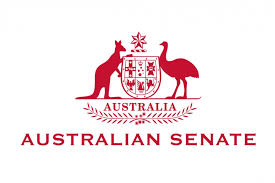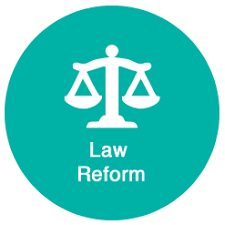
Should Senate be Abolished?
Order Instructions:
Australian Senate should not be abolished because it is a very important role in holding the government accountable on everything and ensuring that the legislation with the Parliament is correctly examined
SAMPLE ANSWER
Should Senate be Abolished?
Australian Senate should not be abolished because it has a very important role in holding the government accountable on everything and ensuring that the legislation with the Parliament is correctly examined. The senate plays the role of a house of advice, review, and consent. Although the senate in Australia has limited control over the practice of the government, it is the one mandated to pass any legislation introduced by the government before it can become a law (Russell & Benton, 2010). Senate has to review all proposed legislation to ensure that the under-represented groups are not completely excluded from the parliament’s attention. There are instances in the past and recently when the senators from the minor parties and the independent senators have held the balance of power in the senate (Browne, 2012). By teaming up with the opposition to block passage of legislation, they are able to exert immense influence that ensures proper debate of amendments to legislation. This paper champions the thesis that the Australian senate is completely unalienable due to the mundane role it holds in the process of legislation, representation, and monitoring the excesses of the government.
As Taylor (2014) notes, the senate committee system is the centre of review activity in the Australian Federal Parliament. Committees offer in-depth scrutiny of proposed legislation. They consider evidence and information from other sources by allowing people to give testimony in person or organizations with special expertise to specific evidence. Consequently, they take a long-term view of the public issues since committee members have the time to become experts in the area of interest as well as to consider a broad array of issues. Committees provide a transparent and open way for the parliament to conduct their policy debates and the evidence is availed for the public to access (Russell & Benton, 2010).
The senator has great potential in informing the government and the parliament concerning matters of public importance by the Parliamentary Inquiries. It is widely recognized that checks and balances are a necessary prerequisite for fair running of any system of government to ensure that power is not abused. The parliament to which the ministry is responsible for its actions is one necessary where checks are required. Parliament being the law-making arm of the government entails representation of interests, beliefs, and opinions of the people (Taylor, 2014). As such, it is perceived as the foundation upon which the modern democracy is built, and it is required to ensure that the government is answerable to the people. However, in the federal parliament this is not the case. The opportunity for the House of Representatives to assume its effective role of checking on the government are significantly reduced since the coalition or parties forming the government in most cases forms the majority seats and controls the House (Lee, 2013). However, the development of the system of responsible government in Australia under which the federal government is now responsible to the House of the Representatives as well as the Senate ensures that the federal Parliament is capable of performing its role of checking on the government.
The Senate has the power to force the government to account for its practices by withholding finance from it. This can occur through rejecting the appropriation bill for the annual services of the government. The Constitution allows the Senate to fulfill this role in relation to the government by scrutinizing and judging its legislation, activities, and policies (Ghazarian, 2012). The Senate is able to check on the government through scrutinizing government administration, delegated legislation, bills, and government policy in general.
The Senate is effective in its role to check the government and ensuring it is accountable since the government unlike in the parliament case rarely possesses a Senate majority. The adoption by the federal Parliament of a system of proportion representation for the Senate elections in 1948 made it possible for parties to gain representations in proportion to the vote’s share (Ghazarian, 2012). Moreover, independents and small parties have gain substantial representation in the senate. As a result, the government has to win the support of non-government Senators before the Senate can agree on passing a government bill. Contrastingly, if the opposition wins the support of the independents and minor parties, the Senate has the ability to reject or amend government bills.
The Senate can also undertake activities which the government is not in support of such as directing a Senate committee to look investigate an activity, legislation, or policy of the government. For instance, a bill must be passed in identical terms by both the House of Representatives and the Senate being enacted to become a law. Although most bills are initiated by the government, the Senate scrutinizes all of them to ensure that they further the interest of the public. Ultimately, senate can pass a bill with amendments, pass it without amendments, or reject it. Bills are first read three times during their process of passage through the Senate. In this phase, the broad policy of the bill is put under debate. The Senate then adopts the form of a committee as a whole to examine the details of the bill. They also engage in debate with ministries and move amendments (Bach, 2008). This whole procedure offers an opportunity to ensure that all the aspects of the bill are examined in totality before the senate can vote to pass, amend, or reject it.
The senate committee system significantly enhances the ability of the senate to review bills and bills that are considered to require more and detailed examination are then referred to the appropriate Legislative Standing Committees for further inquiry (Olivier, 2012). The inquiry process concludes with a presentation of their report to the senate. The report can recommend amendments or passing of a bill without amendments. Notably, the committee on the scrutiny of bills informs the senate of any bill that could trespass on individual liberties or a failure to observe the required legislative safeguards, for instance, the right of appeal. All delegated legislation must also be tabled in the senate. To enhance the effectiveness of the senate function of oversight, the Standing Committee on Regulation and Ordinances scrutinizes all delegated legislation. It then follows up on any problems with the minister in charge while any unresolved problems may result in disallowance of the regulation by senate (Olivier, 2012). Other times that the senate plays a critical role of scrutinizing the government is during for instance, time set aside for raising matters of public importance as well as during debates of a general nature.
The senate through the Estimates Committee is able to review the operations of the agencies and government departments, which are mandated in developing and implementing the policies of the government (Tsang, 2013). For instance, they review the estimates of the annual expenditure of the government agencies and department in detail to establish if revenue is being spent efficiently and appropriately. The estimates are presented in parliament in May in appropriation bills as part of the Budget. There are six committees with each having the responsibility for a given number of departments (Bach, 2008). The Senate minister concerned and other senior department officials have to appear before the senate examining their department to explain expenditure proposals and answer questions in regard to the efficiency and effectiveness of the various programs. The estimates committees then report to the senate following completion of their inquiries.
Although the senate has been faulted for numerous reasons, the big question would be directed towards strengthening it, so that is capable of conducting its crucial duties more effectively instead of efforts to abolish the senate. For instance, mechanisms could be put in place to abolish the likelihood of governments to weaken the powers of senate as happened during the Howard government. The role and powers of the senate should also be enhanced so that it is able to inform the nation by broadening of its investigative powers. It should also be provided with resources and staffing to effectively carry out its roles.
The democratic election process and strategic political function coupled with its extensive constitutional powers have provided the senate with the foundation on the role to check on the government. Although the Senate is faced with numerous challenges and limitations as has been established in the discussion, it is still to a great extent performing its role and function as envisaged in the Constitution; of ensuring that laws are supported by the majority and are properly representative of the entire country, and ensuring that ministries are accountable of their activities and conduct to the people of Australia.
References
Bach, S. (2008). Senate Amendments and Legislative Outcomes in Australia, 1996-2007. Australian Journal Of Political Science,43(3), 395-423.
Browne, E. (2012). Reflections on Former Forced Adoption Policies and Practices: Report of the Senate Community Affairs References Committee, 2012. ISAA Review: Journal Of The Independent Scholars Association Of Australia, (2), 57.
Ghazarian, Z. (2012). The Changing Type of Minor Party Elected to Parliament: The Case of the Australian Senate from 1949 to 2010. Australian Journal of Political Science, 47(3), 441-454.
Lee, A. (2013). How Senate report changes Australia FDI. International Financial Law Review, 32(6), 61.
Olivier, E. (2012). Proroguing the Parliament of Australia: The Effects on the Senate and the Conventions That Constrain the Prerogative Power. Federal Law Review, 40(1), [69]-88.
Russell, M., & Benton, M. (2010). (Re)assessing Parliamentary Policy Impact: The Case of the Australian Senate. Australian Journal Of Political Science, 45(2), 159-174.
Taylor, M. (2014). 2014 – A Year of Policy Challenges. Money Management, 28(6), 12-15.
Tsang, A. (2013). Colourful Outlook for Australia’s Senate. The Financial Times.
We can write this or a similar paper for you! Simply fill the order form!












